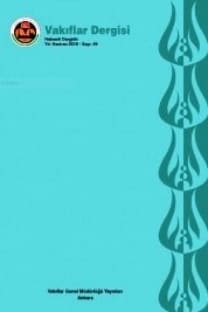Muslihüddin Bin Abdulgani (Müezzin Hoca) Vakfı
Balkanlarda hangi milletten olursa olsun, “Türkçe’yi nereden öğrendin” sorusuna hemen hemen aynı cevap verilir. “İstanbul’un fetih tarihi ne zamandır?” Gerçekten de İstanbul’dan çok önce fethedilerek Türk-İslam beldesi haline dönüştürülen Balkanlar, kaybedileli bir asrı aşan bir zaman dilimine rağmen kadim medeniyetin izlerini hala daha hissettiren bir bölge olarak ön plana çıkmaktadır. Hiç kuşkusuz fiziki yapıyı şekillendiren ve tesis edildikleri yerlere bir Türk-İslam beldesi kimliği kazandıran vakıflar da bu medeniyetin en güzel örnekleridir. Bu çalışmada 16. yüzyıl ortasında Balkanların kadim kentlerinden Üsküp ile Yenipazar ve Trepçe’de vakıf tesis eden ve Müezzin Hoca namıyla meşhur Muslihüddin bin Abdulgani vakfı değerlendirilmiştir. Müezzin Hoca’nın, Üsküp şehrinde adına yaptırdığı cami, yine aynı şehirde inşa ettiği Kurşunlu Han, satın alarak hizmete soktuğu Şengül Hamamı ve vakfa ait dükkânlar ile vakıf sahibinin Yenipazar ve Trepçe’de inşa ettiği camiler ve diğer eserleri hakkında bilgiler verilmiştir. Vakfın kurulmasını müteakip geçirdiği düzenlemeler, cami ve vakıfta görevli kişilerle ilgili atama kayıtlarıve vakfın şehirlerin gelişiminde üstlendiği rol değerlendirilmiştir.
Anahtar Kelimeler:
Osmanlı Devleti, Üsküp, Yenipazar, Trepçe, Vakıf
The Waqf of Muslihuddin bin Abdulgani (Muezzin Hodja)
The question of “How have you learned Turkish?” is answered with another question in the Balkans: “What is the date of Istanbul’s conquest?” Indeed, the Balkans, which was conquered long before Istanbul and turned into a Turkish-Islamic geography, still reflects the traces of the former Ottoman civilization, although the region was lost more than a century ago. There is no doubt that the waqfs that shaped the physical structure and gave a Turkish-Islamic town identity to the settlements are the best examples of this civilization. In this study, the famous waqf of Muslihuddin bin Abdulgani is examined. The founder was known as Muezzin Hodja and he established waqfs in Skopje, Novipazar and Trepča, which were some of the oldest cities of the Balkans in the mid-16th century. Information was given about the mosque of Muezzin Hodja and the Kurshunlu Inn in Skopje, the Shengul Bath that was bought and endowed for the waqf, the shops belonging to the waqf as well as the mosques, and other buildings of the waqf in Novipazar and Trepča. In this study, the regulations following the establishment of the waqf, the appointment records of the mosque employees and the other waqf workers, and the role of the waqfs in the development of cities were revealed.
___
- Ali Emiri Tasnifi II.Mustafa: 137/15218.
- ISSN: 1011-7474
- Başlangıç: 2015
- Yayıncı: Mehmet Kurtoğlu
Sayıdaki Diğer Makaleler
Vakfiyeleri Işığında II. Bayezid’in Eşi Bülbül Hatun Vakıfları
Osmanlı Döneminde Tokat Takyeciler Camii Vakıfları
İstanbul’da Sinân-ı Erdebilî Tekkesi, Vakıfları ve Vakfiyesi
Yusuf Ziya Paşa’nın Hayatı Ve Keban’da Yaptırdığı Konak Hamamı
Muslihüddin Bin Abdulgani (Müezzin Hoca) Vakfı
Besni Cüce Zeyrek Ağa Câmii (Hacı Zeyrek - Kurşunlu - Külhanönü Câmisi)
19. Yüzyıl Sicillerine Göre Hacı Bayram-ı Velî Vakfı’nın Ekonomik Yapısı Üzerine Bir Değerlendirme
XVI. Yüzyılda Basra Vakıfları (1590 Tarihli Tahrir Defterine Göre)
